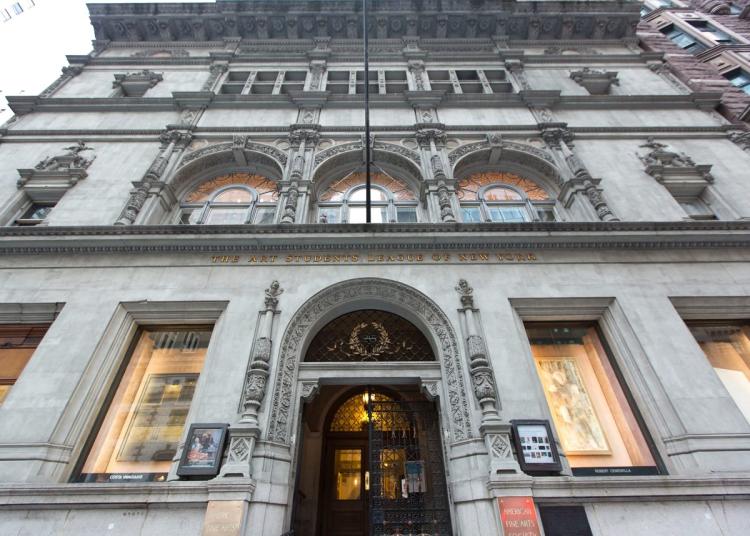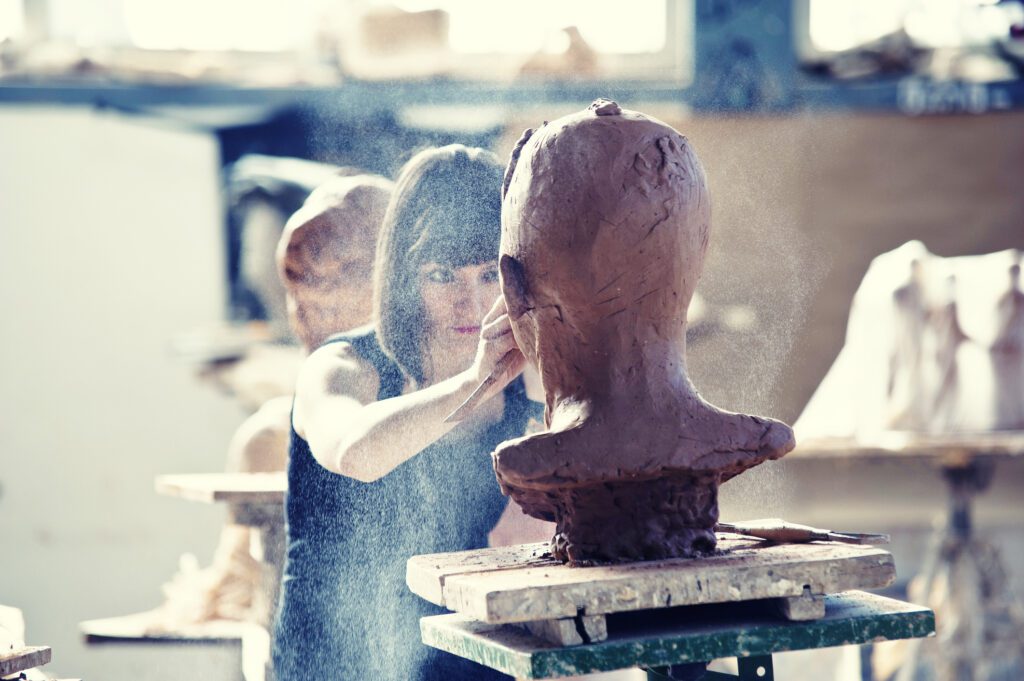
What is the Art Students League of New York?
The Art Students League of New York is an artist-founded art school and historical institution known for its broad appeal to artists at all skill levels. The art school is also known for participating in historically significant art movements such as Abstract Expressionism, the New York School, and Minimalism.
How Was the Art Students League Founded?
The institution was founded in 1875 on the premise that artists were dissatisfied with the lack of quality instruction in the basics of portraiture, sculpture and composition offered by New York art schools at the time.
Prior to the Arts Student League (ASL), the primary art school in New York City was the National Academy of Design (known then as the “National Academy”).
In 1875, rumors began circulating that all art classes would be canceled due to insufficient funds. Students at the Academy wanted to continue classes and came together to rent a small 4th floor loft in downtown Manhattan at the corner of 5th Avenue and 16th Street.
In a flier pinned to a bulletin board that was addressed to the Council of the National Academy of Design and its entire student body, dated July 1875, a student representative wrote, “The students of the National Academy of Design, remaining in New York, have formed, with Professor’s Wilmarth’s cooperation, an Association called the Art Students League, having for its objects the attainment of a higher development in Art Studies.”
American artists Thomas Eakins and Augustus Saint-Gaudens were among the founding students and served on the League’s Student Board.
The Art Students League moved its location to a French Renaissance-style building at 215 West 57th street in 1892 and has been there since. This space is recognized on the national register of historic places in New York City.

What Does the Arts Students League Offer?
Standing as an institution of American fine arts history as well as a functioning art school today, the league offers a variety of options for art education.
Flexible Teaching
The school is based on an atelier system, which means instructors teach their classes independent from any overarching curriculum; it’s like training at an independent artist’s studio with multiple teachers in the same building.
Art Classes
The Art Students League is also one of the most affordable art schools in the city. The average course, which meets five days a week, is around $230 a month (about $10 dollars a class), and the cost to study as a full-time student is around $3,800 — not bad, considering rising college tuition fees over the last few decades.
Since its founding, the League has also maintained its unique payment system, where students sign up for classes by month rather than semester, allowing them greater flexibility.
As an open and independent school founded by artists for artists, the League hasn’t been traditionally accredited either. In that sense, it is not an art school like SVA, Pratt or Parsons. Yet many students have treated the League as a four-year college, and contemporary artists still choose to study there. Ai Weiwei, for example, studied there from 1983 to 1986.
Though founded primarily on the medium of painting, the school offers a variety of courses such as sculpture, pottery, printmaking and more.
Certificate Programs
In recent years, the Art Students League added a certificate program to their offerings, giving interested students a more formalized 2-year, or 4-year program that requires a year of fine arts experience. The program attempts to formalize the League’s current offerings.
How Did the Art Student League of New York Influence the Art World?

The influence of the Art Students League of New York is due to its alumni and the effect they elicited in Modern and Contemporary Art.
Pre-World War II
In the two decades that divided World War I and II, many of the New York artists who would eventually define the Abstract Expressionist era received their formal studies at the Art Students League.
The American Social realist painter John Sloan was appointed the League’s president in 1931. His students would include Alexander Calder, John Graham, and Barnett Newman.
In 1929, a young, ambitious painter from Wyoming came to the League to sharpen his skills. His name was Jackson Pollock. Pollock studied under the tutelage of the American Muralist Thomas Hart Benton and Sloan, though he greatly preferred Benton.
Other notable League students during the 1930s include Mark Rothko and Arshile Gorky.
Many artists who defined the Abstract Expressionism movement continued attending lectures and forums at the Art Students League into the late 1930s. Clement Greenberg was known for frequent lectures given by Hans Hofmann during his stint at the League.
The Rise of Abstract Expressionism
With the growing popularity of Black Mountain College in North Carolina and the Hans Hofmann schools in New York City and Provincetown, MA, not to mention the abundance of new art galleries, all boasting the work of abstractionists, many artists and teachers abandoned the Art Students League by the late 1930s and early 40s.
Of all the Abstract Expressionists who studied at the League, Jackson Pollock was arguably the school’s most popular alum and undoubtedly the most famous to have ever studied under Thomas Hart Benton.
Pollock was reportedly fond of commenting that Benton’s instruction gave him something to rebel against. While Pollock’s and Benton’s respective artistic styles could not be more different, many historians have reconsidered the profound influence Benton had on Pollock’s work, mainly when it came to Pollock’s sense of balance and subtle symmetry.
By the time the Abstract Expressionist artists were regularly showing in uptown art galleries, a new crop of young artists were attending classes at the League, with students including Robert Rauschenberg, Al Held, Helen Frankenthaler, Donald Judd, James Rosenquist, Roy Lichtenstein and Cy Twombly.

Final Thoughts
The Art Students League boasted a diverse curriculum and a list of alumni unequaled by either Black Mountain or the Hans Hofmann School. The artists who studied and taught at the League have substantially shaped the vocabulary of 20th-century American art.
Given this impressive group and their body of work, the Art Students League was integral in the evolution of artistic styles ranging from Abstract Expressionism and Pop Art to Combines and Conceptualism.
The League continues this legacy today through a wide range of enrollment options in different courses and their philosophy of interactive learning. ASL, as a whole, is an art historical gem in NYC, a great leader in the mission of bringing a more accessible means of teaching the visual arts.